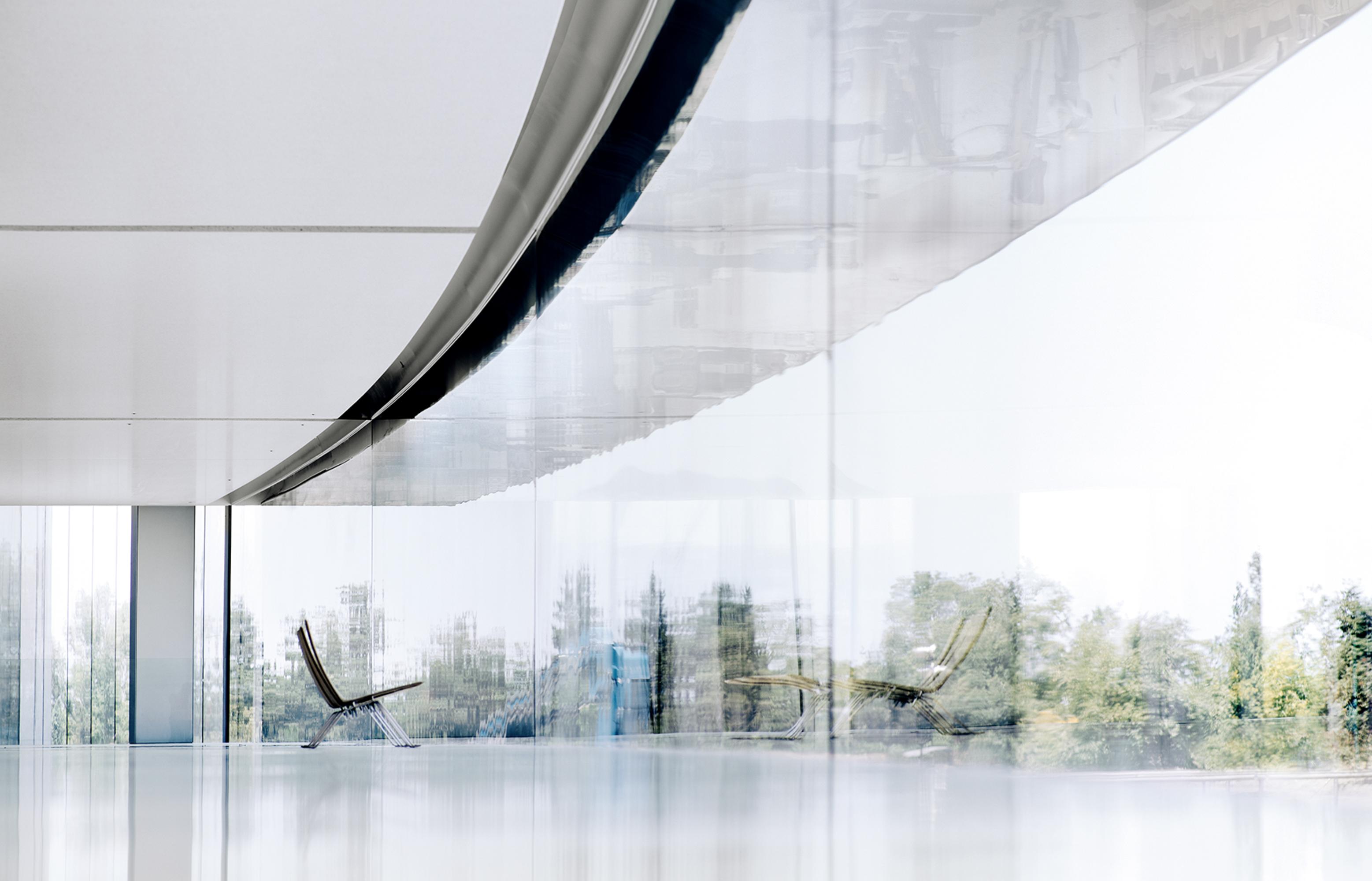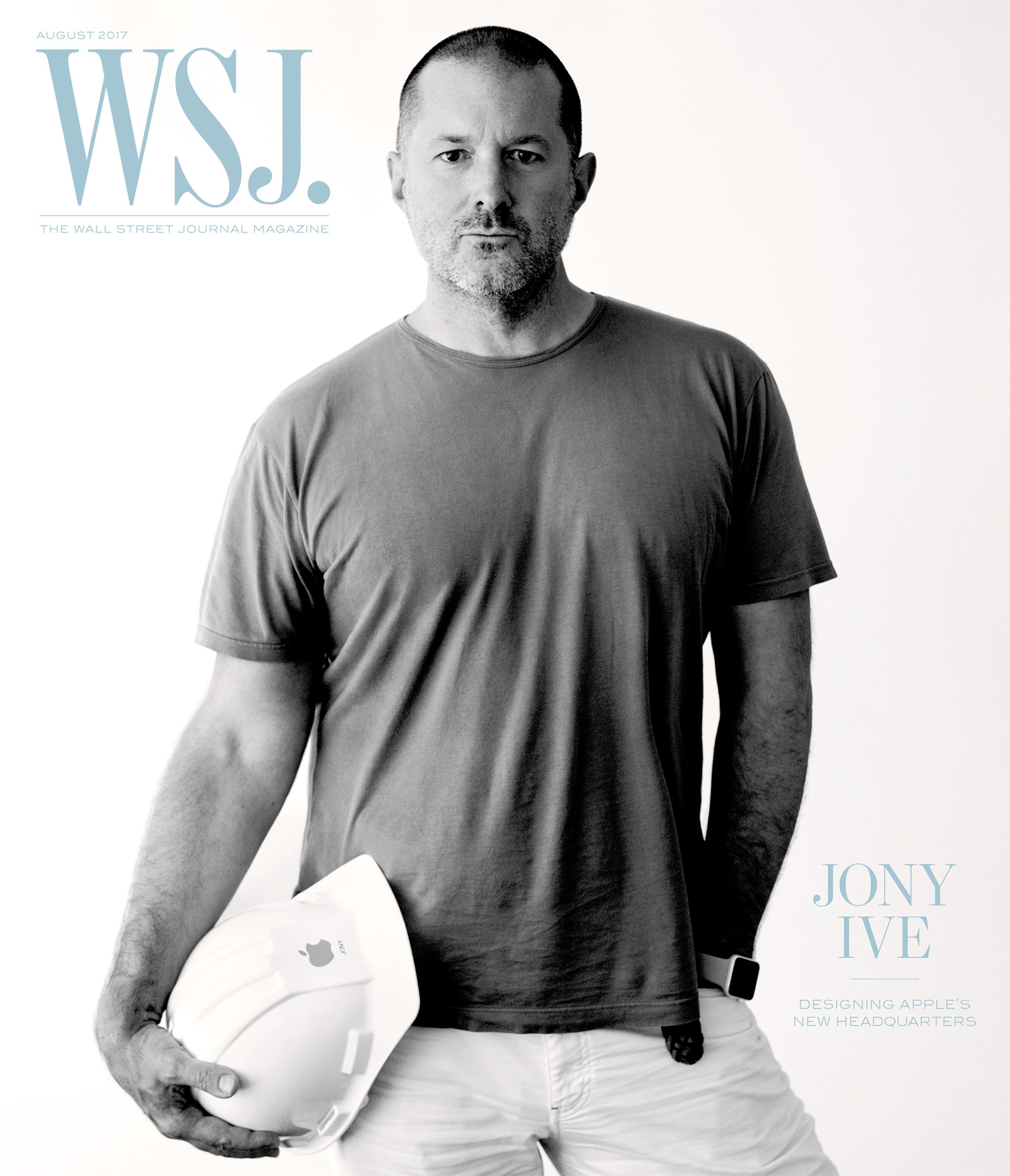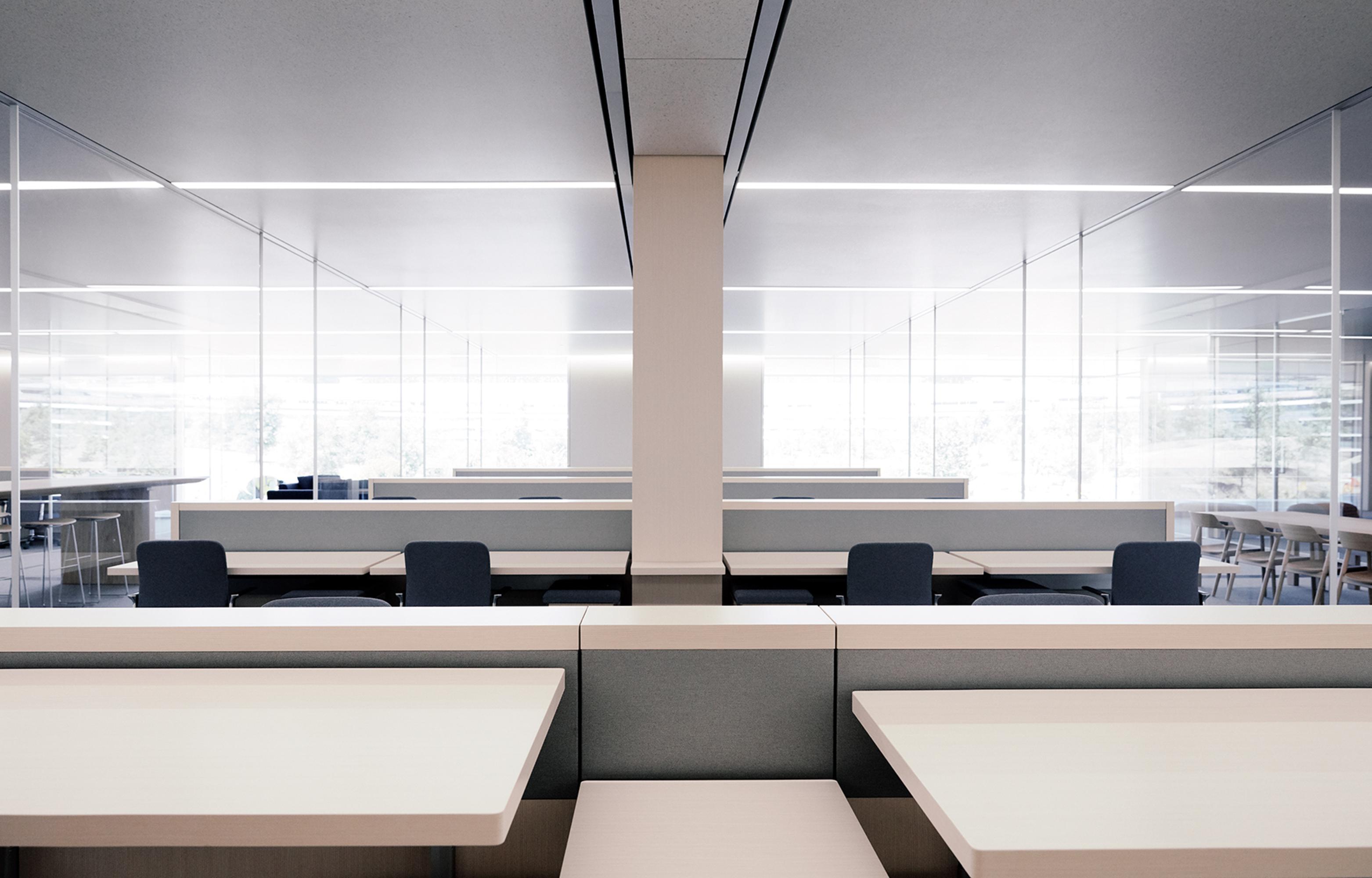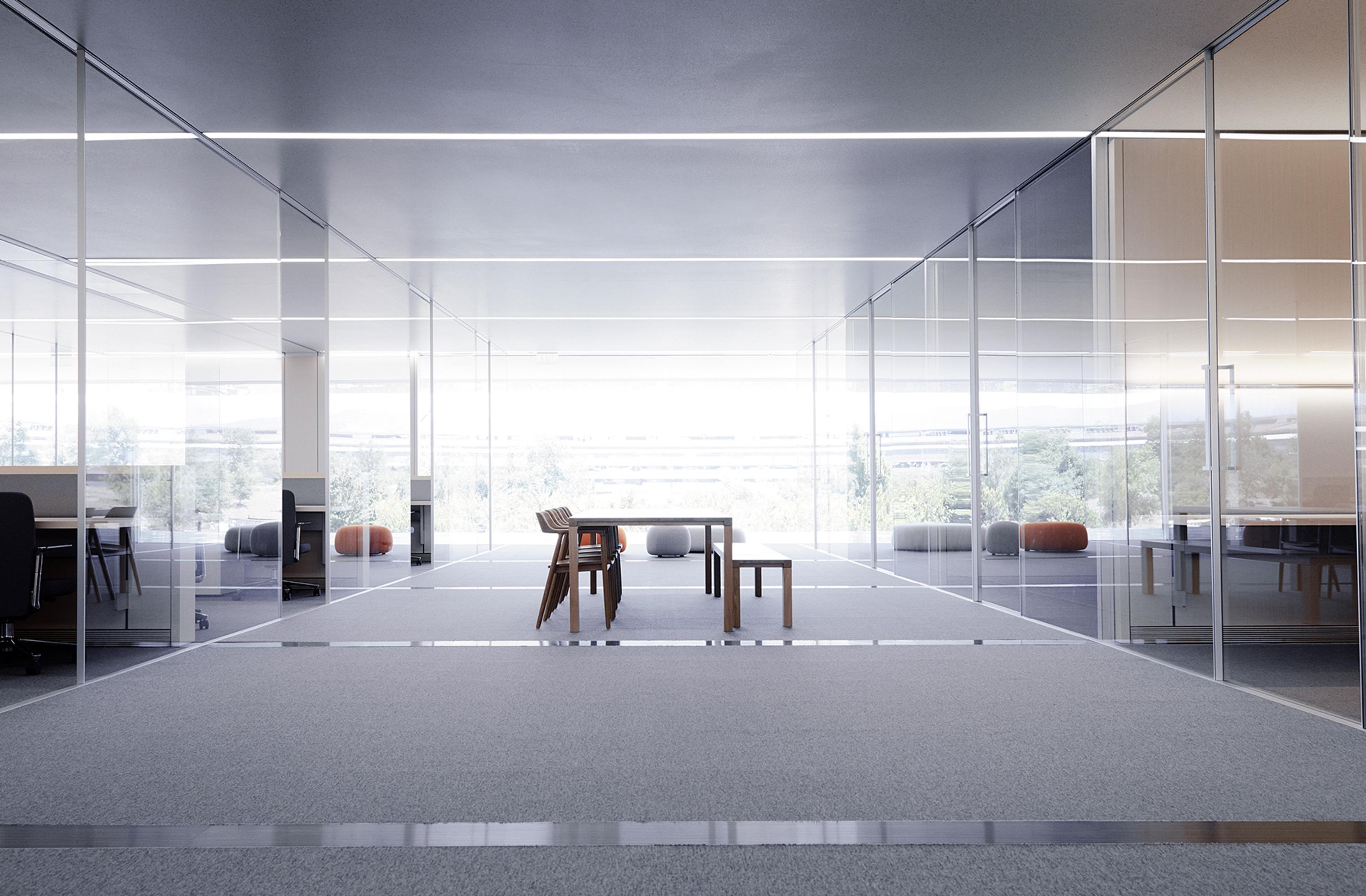
Hallways around the perimeter of the main building are set up to encourage casual meetings.
Designed in collaboration with architect Norman Foster, Apple Park will run 100 percent on renewable energy. It’s the biggest corporate office building in the world.
Apple’s stellar growth in the past decade has posed challenge to its internal culture and collaboration, necessitating the need for a new kind of office space.
According to CEO Tim Cook:
We didn’t plan our growth, and then when we saw our growth, we were so engrossed in trying to push things forward that we didn’t spend time to really develop the workplace. We’ve done a really good job of working around it, but it’s not the way we want to be working, nor does it represent our culture well.…For all of the beauty of technology and all the things we’ve helped facilitate over the years, nothing yet replaces human interaction, and I don’t think it will ever happen.”
The idea for the campus was born during a walk in London’s Hyde Park in 2004 when the first iPhone was in the works, with Jobs “fantasizing” with Ive about building a campus centered around a quad, with plenty of parkland for meandering and meeting.
The new headquarters are being built at a reported cost of $5 billion.

The four-story building encourages employees to walk to visit colleagues and attend meetings rather than use elevators, Ive said. He also shot down a recent article claiming Apple contributed to a tree shortage in the Bay Area by buying up so many plants for the campus, “as if we’d got to the end of our project and we thought, Oh, we’d better plant some trees.”
Apple began working with an arborist years ago to source 9,000+ trees for Apple Park, many of them drought-resistant, that will have been planted by the time the campus is finished.

Desks in the open-plan workspaces can be raised to standing level at the push of a button.
Ive and his team approached designing Apple Park like they would any other Apple product.
“A lot of the buildings that are being built at the moment are products of software-only cultures,” said Ive. “Because we understand making, we’ll build a prototype and try it and use it, and see what works and what doesn’t.”
Other highlights from the interview:
- Custom furniture was designed by Naoto Fukasawa.
- The circular glass canopies, shown on the image at the top of the post, reflect more of the surrounding greenery than Ive had anticipated.
- The chairs in the hallways are by Poul Kjærholm.
- At the height of activity in February, 6,200 construction workers were on-site daily.
- While Apple Park was in development, Ive hired Foster to help implement his designs for a a red brick mansion he bought in 2012 in San Francisco’s Pacific Heights neighborhood.
- iPhones will be the primary mode of communication for everyone, though employees can also lobby for a desk phone.
- Whiteboards are built into floor-to-ceiling sliding doors in the central area of each pod.
- The Steve Jobs Theater will host product launches, seminar talks, small concerts and corporate meetings.
- Meetings with Cook or Ive will be simulcast to every pod on campus.
- There will be 2,000 custom bikes made by Public Bikes and painted “Apple gray”.
- The entire campus will be mapped on Apple Maps.
- Ive told director J.J. Abrams that he had the look of the original Stormtroopers in mind when he designed AirPods.
- Fun fact: Ive’s suits are custom-made by a tailor in the north of England, Thomas Mahon, but he rarely dresses up.
Apple Park has turned into one of his longest projects as Apple’s chief designer.

Ive commented:
There’s the same rather strange process you go through when you finish a product and you prepare to release it—it’s the same set of feelings.That feels, I don’t know, encouragingly healthy, because I would be concerned if we lost that sense of anxiety. I think that would suggest that we were not as self-critical, not as curious, not as inquisitive as we have to be to be able to be effective and do good work.
The driving force behind the new headquarters, Ive “was the one who carried it forward with the same intent” after Steve Jobs died, according to Steve’s widow Laurene Powell Jobs.
“The materiality of it is inspiring,” she said of the ring-shaped building. “The quality of the wood, the quality of the stone, the quality of the light—that’s what makes it so beautiful.”
Photos: Jansson for the WSJ Magazine, August 2017 issue.